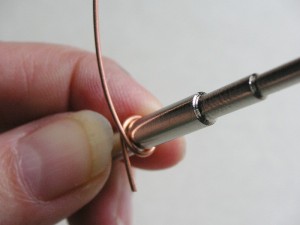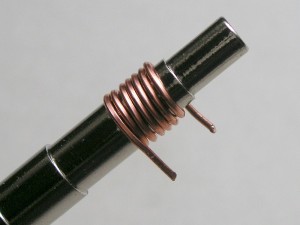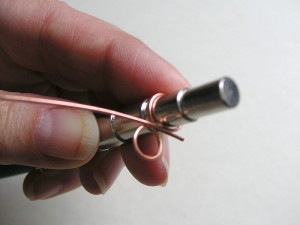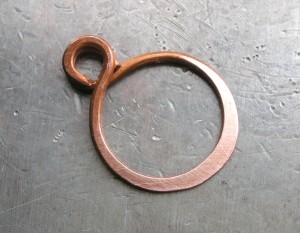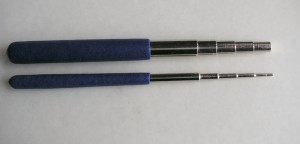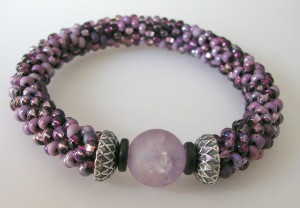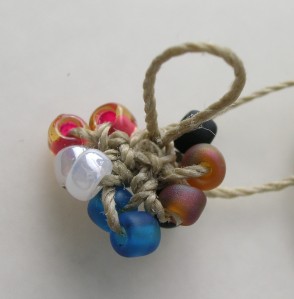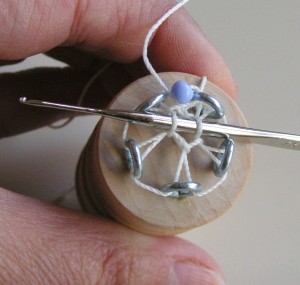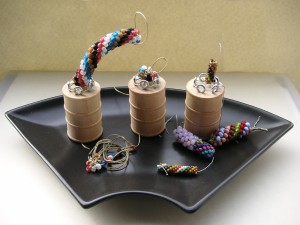Part of the “Tools that Delight” posts… As a wire worker, mandrels are some of my all time favorite tools. Since there are always lots of wraps and loops and coiling in my designs, it is important that there is consistency in the techniques used – sloppy wire work stands out, and makes a good design cheap.
These are a new favorite tool of mine! I’ve been doing wire work for many years, and I’ve always used round nose pliers – I’m pretty good at it too! But there are some problems that folks have with pliers – most notably, it is difficult to repeat wire wraps with consistency, because the wire is easily moved up and down the pliers, resulting in loops that are not the same size.
Using stepped mandrels ensures that the wraps are always consistent, because the mandrels are cylindrical (rather than cone shaped), and the wire actually rests on a “step” so it can be repeated over and over with no change.
Look how nice this coil looks, perfect to make a few jump rings. I confess – I have a complete jump ringer power system to make jump rings in quantity. But often, I just need a few, and it’s easier to wrap up a coil and saw or cut them.
And it’s simple to make links – these mandrels have a range of sizes between 1.5mm and 10mm, so it’s super simple to create whatever size you need for your project. I make a whole bunch of these at one sitting, so that I always have them ready when needed.
This component (above) was made using a small wrap on one end, and a much larger wrap on the other. Then, the link was hammered flat to harden it so it doesn’t pull open, and also, because it looks cool hammered
I really really love these, and I now keep a set in my portable tool kit and bring them to class for my students to use.
I also decided to sell them – if interested, they are available at my Etsy store in the Tools section. I include a tutorial on using the mandrels, as well as some practice wire, so it’s easy to get going… wire work is fun, and the ability to make your own jump rings and links and clasps is a great way to start adding handmade wire to your jewelry.

